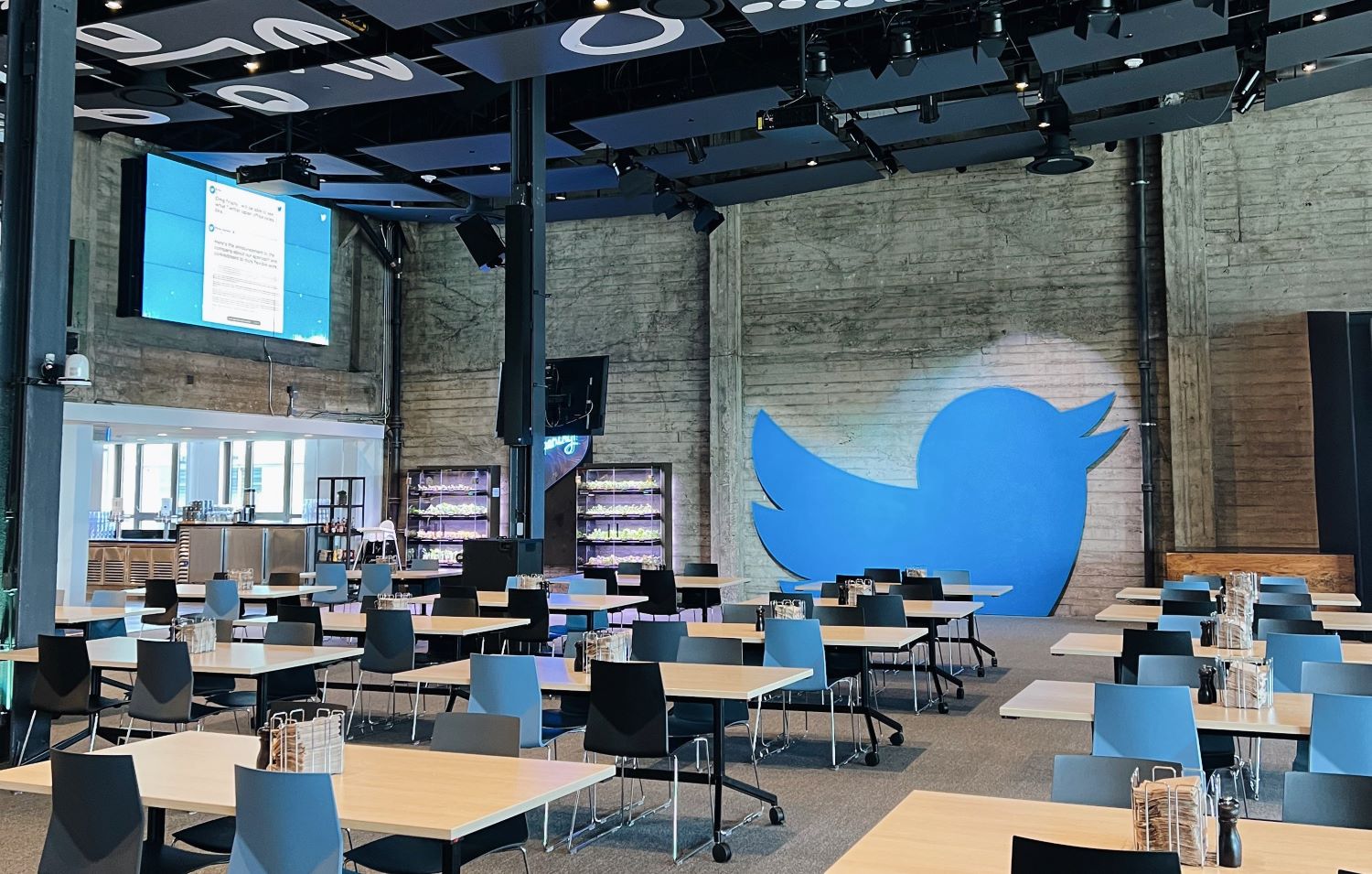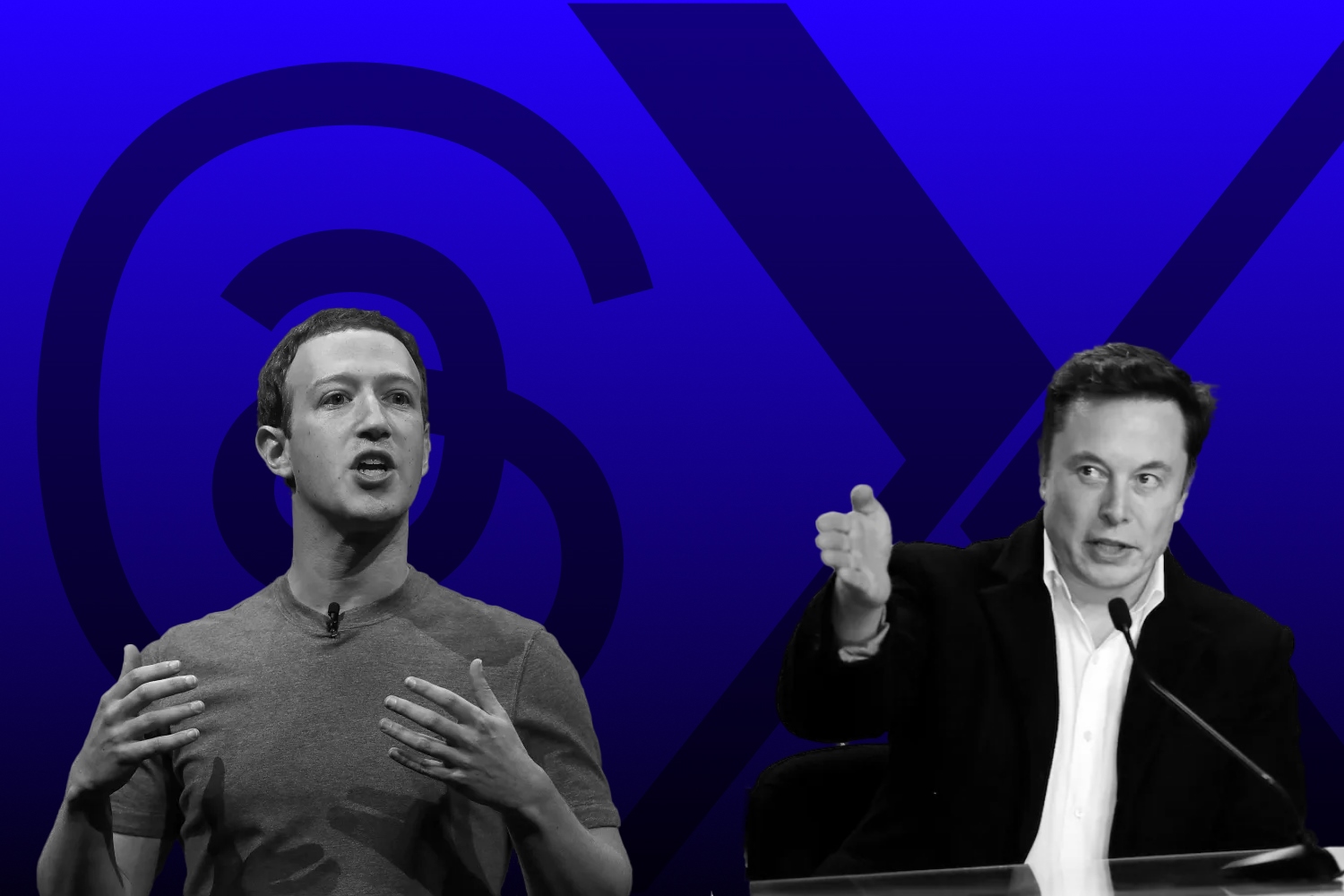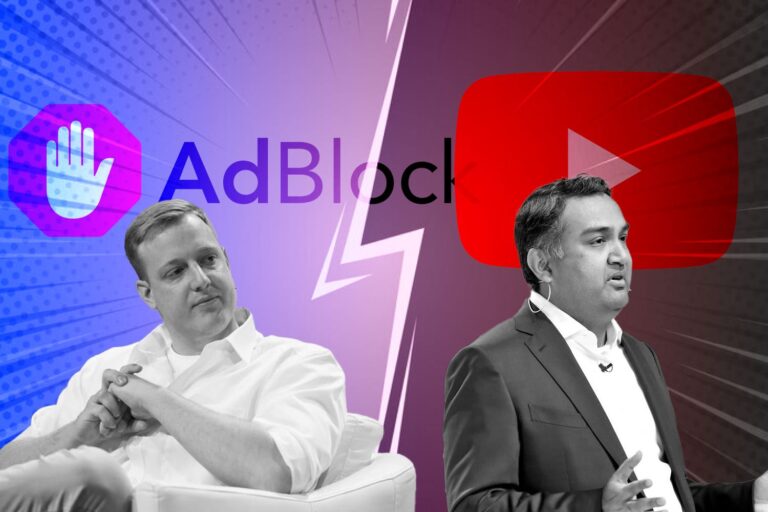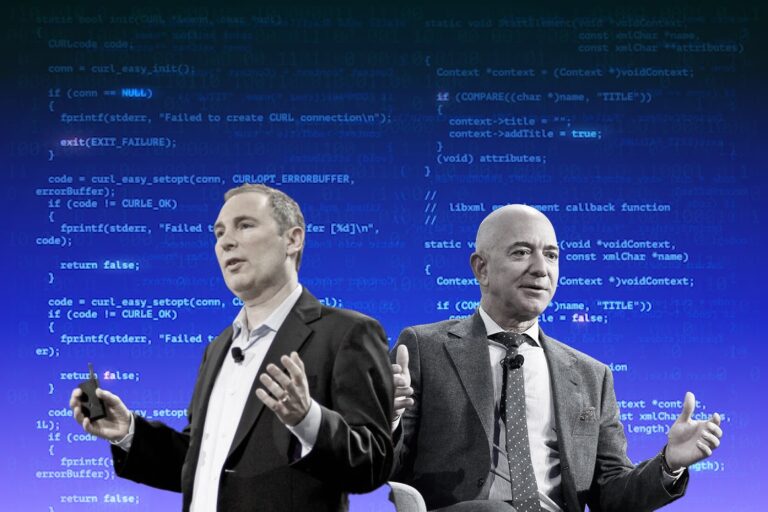Threads vs. Twitter (X): The Ultimate Clash for Digital Dominance and Cultural Connection
In the ever-evolving landscape of social media, where innovation and competition intertwine, a new player has emerged to challenge the norms of user engagement and growth. Threads, a Twitter clone, has taken the digital world by storm, achieving a feat that seemed almost unimaginable gathering a staggering 100 million users within a mere five days of its official launch on July 5th, 2023.
At the heart of Threads’ rapid ascent lies an unexpected ally—Instagram, a social media giant in its own right. Leveraging the immense user base and influence of Instagram, Threads strategically populated its platform, instantly propelling it into the limelight.
While the role of Instagram in Threads’ growth cannot be understated, there’s another layer of fascination that captivates minds in the tech community—the protocol that Meta (formerly known as Facebook) plans to employ.
As Threads races against time to establish its position, it enters into a dynamic dance with established platforms, each vying for the lion’s share of online interaction. Yet, amidst this spectacle of growth and rivalry, critical questions linger—how will the envisaged Meta protocol impact the trajectory of Threads? Who will ultimately emerge as the victor in this grand clash of titans?
First, let’s start with the basics.
A Phenomenon Unfolds: Threads’ Explosive Introduction and Rapid Surge
At the foundation of the Threads phenomenon lies a straightforward yet compelling concept. Threads is, at its core, a text-based conversation app that forays into the world of social networking with an innovative twist.
Positioned as a creation by Meta, the company known for its transformative endeavors, Threads is designed to be more than just a communication tool—it’s a digital space where communities converge, conversations flourish, and connections transcend geographical boundaries.
Meta envisions Threads as a versatile platform where people can participate in conversations covering a wide range of subjects. These discussions encompass both current, important themes and upcoming, lesser-known trends. Threads seeks to provide a fluid space where individuals can share ideas, express viewpoints, and disseminate knowledge.
What distinguishes Threads from its predecessors is its focused approach to fostering communities. This isn’t just a space where users mingle; it’s a haven for enthusiasts of various passions and interests to come together organically.
As Meta emphasizes, Threads facilitates direct interaction between users and their favorite creators, as well as with like-minded individuals who share the same fervor for particular subjects. It’s a place where camaraderie thrives and where the foundation of loyalty is built upon common affinities.

But Threads isn’t confined to being a mere stage for conversations—it’s an arena where individuals can emerge as creators and thought leaders. Through this platform, users have the opportunity to cultivate their personal following, carving out a space to broadcast their own ideas, viewpoints, and creative expressions to a global audience. This intricate interplay between dialogue, inspiration, and creativity lies at the heart of Threads’ allure, fueling its exponential growth in record time.
In the limelight of Threads’ explosive debut, a constellation of renowned personalities has swiftly gravitated towards its digital embrace. Among them, luminaries from the entertainment, business, and cultural spheres have cast their presence, turning the app into a virtual gathering ground for icons of our time. The allure of Threads’ fresh approach to conversation and engagement seems to have captured the imagination of even the most eminent figures.
Names that resonate deeply with global audiences, such as Sarah Jessica Parker, Shakira, Kim Kardashian, Oprah Winfrey, Jennifer Lopez, and Gordon Ramsay, have embarked on their Threads journey. Through this platform, they step beyond their established realms of fame and delve into a realm where dialogue is paramount—a place where the chasm between celebrity and admirer narrows, and connection flourishes.
In the early days of their Threads venture, these luminaries opt for a subtle introduction—a virtual handshake, if you will. Sarah Jessica Parker, the charismatic face behind cultural touchstones, offers a glimpse into her world by posting an upbeat note of optimism: “Morning all. Posting. With optimism.” It’s a simple sentiment that encapsulates the spirit of the app—a space where perspectives, however celebrated or ordinary, are woven together in a tapestry of shared experiences.
Threads achieved what others might take years to accomplish—reaching an astounding 30 million users within a mere 24 hours. But the narrative doesn’t stop there; the story of Threads is one of relentless momentum, a narrative that saw the platform soar to even greater heights. In just five days, the app managed to gather an astonishing 100 million signups—a true testament to its irresistible appeal and the speed at which digital communities can be fostered.
Even Adam Mosseri, the head of Instagram, couldn’t help but express his amazement at the milestone. “100 million people signed up for Threads in five days. I’m not sure I can wrap my mind around that fact. It’s insane; I can’t make sense of it,” he exclaimed. The rapidity of this surge in signups is a testament not only to the app’s appeal but also to the dedication and ingenuity of the team that crafted it.
Mark Zuckerberg, the driving force behind Meta, the parent company of Instagram, shared initial statistics that painted a vivid picture of the app’s ascent.
Within the span of two hours, Threads had secured 2 million signups. This figure doubled within four hours, reaching an impressive 5 million. An astounding 10 million registered users were logged within a mere seven hours of launch. And as dawn broke on the next day, the numbers continued their upward trajectory, with over 30 million individuals eager to explore the new platform.
Echoes of Familiarity: Threads’ Resemblance to Twitter
However, the intricate dance of competition, ownership, and strategy in the world of social media is a captivating narrative that extends beyond the surface.
Indeed, Threads’ resemblance to Twitter in certain aspects is a noteworthy facet of its design and functionality. Drawing upon the familiar structure of microblogging platforms, Threads positions itself as a space where conversations and content sharing are the primary focus. As users engage with the app, the echoes of Twitter’s influence become increasingly apparent.
One of the defining features of Threads is its main feed, which is akin to Twitter’s timeline. Here, users encounter “threads,” a term coined by Adam Mosseri, the head of Instagram, to denote posts that populate the feed. These threads comprise posts from accounts that a user follows, fostering a sense of curated content delivery based on individual preferences.
Moreover, Threads introduces an element of recommendation, where Instagram’s algorithm suggests accounts that might resonate with users, mirroring Twitter’s approach to showcasing trending topics and accounts of potential interest.
Threads extends the ability to repost content with personal commentary, a familiar function to Twitter users. This echoes the concept of retweets, allowing users to amplify content they find compelling while adding their own insights. Additionally, the prominence given to replies within the main feed reinforces the interactive nature of both platforms, emphasizing conversations as a central pillar of user engagement.
One notable distinction exists: Threads currently lacks a dedicated feed showcasing content exclusively from accounts that a user follows. This feature, present in Twitter, presents a potential avenue for Threads to evolve its functionality. It’s conceivable that the app might incorporate such a feed in the future, adding another layer of similarity to its Twitter-esque framework.
Competitive Advantages in the Race for Social Media Monopoly: A Closer Look

Nevertheless, Threads and Twitter possess distinct competitive edges that position them as possible contenders for monopolistic control.
Twitter, with its emphasis on brevity and real-time engagement, emerges as a powerhouse of up-to-the-minute information and rapid discourse. The clever integration of hashtags for topic discovery and @mentions for seamless interaction streamlines conversations, while innovations like live event tweeting, audio conversations through Twitter Spaces, and Fleets for temporary stories bolster its multifaceted appeal. This allows Twitter to be a dynamic hub for diverse public discussions.
On the other hand, Threads introduces a refreshing concept of authenticity and close-knit connections. The Auto Status feature, updating statuses based on users’ activities and locations, enhances real-time experience sharing within a private circle.
By sidestepping public distractions, Threads cultivates meaningful interactions among a select group of friends. Its refined interface, delivering updates from close connections through an algorithmic feed, creates an individualized and intimate digital sphere.
Both platforms have their unique strengths – Twitter excels in rapid discourse and versatile features, while Threads focuses on authentic exchanges and personalized experiences. The platform that can augment these strengths, address potential weaknesses, and consistently evolve according to user preferences.
The Ever-Changing Landscape of Twitter Under Elon Musk’s Helm
Twitter, once a pioneering force, underwent a significant shift in 2017 when it was revealed that the platform had been overstating its monthly active user count. Around that time, the company reported approximately 326 million active monthly users—a figure that raised questions about the accuracy and transparency of its disclosures.
Mark Zuckerberg, the innovative mind behind Meta, occupies a distinct role in the world of social media dynamics. His attempt to acquire Twitter back in 2008 highlights his forward-thinking approach and desire to influence the online environment. Despite his endeavors, Twitter chose to stay autonomous, forging its own path in the subsequent years.
Fast forward to the present, and the story takes an intriguing turn with the acquisition of Twitter by Elon Musk for $44 billion. This shift in ownership signaled a new era for Twitter, bringing Musk’s vision and strategies into the fold. Musk’s efforts to transform Twitter into a profitable venture have led to changes in both its structure and policies. These changes have elicited diverse reactions from the platform’s user base, ranging from loyal support to concerns about the direction Twitter is taking.
Musk’s recent announcement regarding a temporary cap on the number of tweets that nonpaying users can view each day, along with the swift reversal of the decision to make tweets inaccessible to users who are not signed into the platform, underscores the intricate balance that social media platforms must strike between innovation and user experience.
With each new alteration to its policies, Twitter’s platform encounters a tidal wave of reactions, often manifesting as tweets expressing the intent to abandon the platform. This ongoing cycle of discontent arrives amidst a backdrop of considerable challenges for Twitter, including a substantial decline in advertising spending—a decline that has reached nearly 60% compared to the previous year.

Elon Musk has yet to respond to NPR’s request for comment on the launch of Threads. However, his previous stance on Threads’ sibling platform, Instagram, provides a glimpse into his perspective. Musk referred to Instagram as “weak sauce,” expressing his preference for the discourse on Twitter over the seemingly superficial satisfaction offered by Instagram.
In a tweet, Musk conveyed a nuanced sentiment: the preference to face the candid critiques of strangers on Twitter, as opposed to the illusory happiness that might be found on Instagram. This statement speaks to a larger narrative—the complexity of social media interactions and the contrast between genuine expression and curated appearances.
Microblogging Dynamics: Threads and Twitter in Privacy Spotlight
Twitter has maintained its leading position in the microblogging realm for almost two decades, but Threads is swiftly gaining ground as a formidable competitor with rapid growth. However, concerns have emerged due to media reports indicating that Threads might pose risks to user privacy.
To truly comprehend the extent of data that Threads accumulates, it’s essential to examine two privacy policies: the one that applies to the majority of Meta Platforms’ offerings and the Threads Supplemental Privacy Policy. Meta, which owns Facebook and Instagram, has an extensive privacy policy that comprehensively explains its data collection practices, encompassing a wide spectrum of information.
Meta’s privacy policy delineates the methods and objectives of data collection. It encompasses particulars about users, their devices, operating systems, app utilization, location (irrespective of Location Services settings), and potential access to cameras and photos. Additionally, the company acquires data from third-party sources, including demographics, online interactions, and engagement with advertisements.
The Threads Supplemental Privacy Policy sheds light on the alignment of Threads’ data with Meta’s larger ecosystem. Data obtained from Threads is integrated with information from other Meta products, primarily Instagram. Notably, Threads mandates an Instagram account, and although deactivation is feasible, permanent erasure necessitates the removal of Instagram as well.
A comparison of the privacy practices of Threads and Twitter reveals a complex landscape. Both platforms engage in data collection, yet Twitter appears to be marginally less invasive. This assessment is subject to change as platforms adjust to evolving privacy norms. Nonetheless, it’s evident that both platforms confront the intricate task of striking a balance between user interactions and safeguarding privacy.
The Next Digital Frontier: Unfolding Web3 Revolution with ActivityPub

With Twitter and Threads poised to embrace the next wave of innovation, the spotlight is on Web3 and ActivityPub as the anticipated catalysts for transformative change.
Gone will be the days of managing numerous social accounts for separate platforms. Instead, a revolutionary concept emerges: a singular social account traversing seamlessly across Facebook, Twitter, Google, shopping websites, and beyond.
Departing from conventional corporate server models like Amazon Web Services, this new era’s digital backbone rests on blockchain, the same infrastructure supporting cryptocurrencies like Bitcoin. The essence of this transformation is decentralization, breaking the stranglehold that entities like Facebook and Google wield over their respective domains.
At the heart of this transformation lies Web3, a concept that holds the potential to revolutionize our online interactions. By participating in the Web3 ecosystem, such as posting a photo on a blockchain-based network, users stand to gain tokens that bestow ownership stakes and decision-making authority on the platform.
This marks a distinct departure from the current landscape where internet platforms unilaterally enforce their rules, often inviting allegations of bias and censorship. While some figures, including Tesla’s Elon Musk, dismiss Web3, venture capital firms and major corporations are investing heavily in its development.
Twitter, a central player in the social media sphere, is already navigating the Web3 landscape. With its Bluesky project, Twitter aims to construct a decentralized social media platform, a decisive step towards actualizing Web3’s ideals. Simultaneously, the emergence of ActivityPub and “Fediverse,” a network of interconnected servers following the same protocol, is propelling change.
This protocol is gaining traction, with notable names like Tumblr, Flipboard, Medium, Mozilla, and even Meta contributing to its growth. ActivityPub’s reach is evident through the official WordPress plug-in for its integration, potentially granting a significant portion of internet platforms access to its capabilities. Within this environment, developers are reimagining platforms such as YouTube and Instagram using ActivityPub.
Though the ActivityPub protocol is not without its challenges, its momentum is undeniable. Mastodon, a platform fueled by ActivityPub, has become a sanctuary for those seeking an alternative to the conventional social media giants.
This underscores a larger trend, with industry insiders predicting the rise of scaled ActivityPub-based social platforms as a revolutionary force. Amidst the array of contenders seeking to redefine social media, the outlook of industry veterans is illuminating.
And finally, Twitter’s ongoing engagement with Web3 through Bluesky and Threads’ focus on authentic interactions reflect the changing landscape, underscoring their significance in this dynamic paradigm shift.









